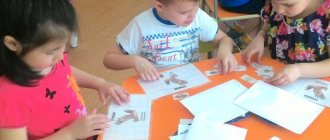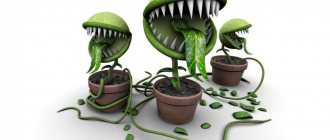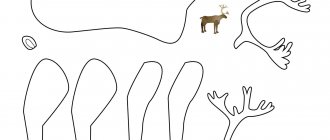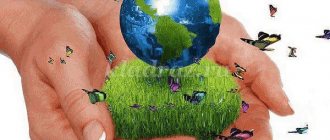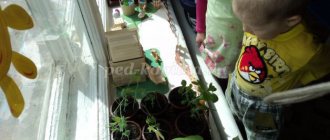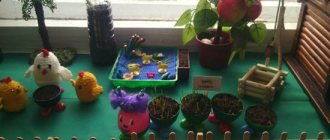Interesting Facts
- Dwarf cows are widespread in India - there are about 30 breeds. The height of these cows does not exceed 1 meter. In Scotland, mini-cows are bred - the Highland beef breed. In addition to their small stature, they have thick, long hair and long horns. In Belgium, a Belgian blue cow was bred for meat - it can weigh up to 1 ton, and it looks like it never left the gym.
There are still indigenous breeds of cows. These are breeds in which humans did not participate. These include Yakut, Buryat, Ukrainian gray steppe and Siberian breeds.
Goats are very unique and interesting animals. They are very smart, funny and devoted to their owner, not at all picky about living conditions and the quality of food. Communication with them brings a lot of positive emotions, and fresh air, physical labor and goat's milk improve the health of the owner.
Getting a goat in your country house or garden is not at all a difficult matter, because a goat is the most unpretentious farm animal. On the farmstead, a shed for goats will not take up much space - only 2-4 square meters is enough for one adult goat. m. The main condition is the availability of an area for free grazing of animals. In the spring - summer season, a free-range goat does not need additional feeding - the grass that it finds while grazing is enough for it. Therefore, raising goats is the most profitable activity - the costs of maintaining them are insignificant, and the return is quite high.
Pigs.
There are about one hundred breeds of pigs in the world. Which one should I stop at? Choose local breeds - they are more adapted to your climatic conditions, feed, and drinking water quality.
Horse
You don't have to be a rancher to have a horse as a pet. Fans of these beautiful animals often purchase their own horse, striving for sporting achievements, or just for fun, riding on weekends.
Maintenance and care
Keeping a horse, like any large animal, is very expensive, and you need to be prepared for this. The difficulty of keeping a horse for a city resident is that the pet is removed from the owner. It is unlikely that you will be able to visit your horse every day, providing complete care yourself. Therefore, be very responsible when choosing a stable for your horse. Today there are a lot of equestrian clubs and private stables, both elite and ordinary.
Application.
Questionnaire
for parents
Dear parents, we ask you to answer the questionnaire in order to obtain information about the pets living in your families.
1. Do you have pets at home?
2. If not, why not?
3. Do your children take part in caring for pets at home?
4. Do they enjoy doing this?
5. What animals do you prefer to keep at home?
6. Do you feed homeless animals on the street?
7. Can you take home a stray animal from the street?
Thank you for your cooperation!
Short-term project “Pets”
Directorate of General Education Administration
Rtishchevsky municipal district of the Saratov region
MUNICIPAL PRESCHOOL EDUCATIONAL INSTITUTION
“KINDERGARTEN No. 2 “BEE”, RTISHCHEVO, SARATOV REGION”
(MDOU kindergarten No. 2, Rtishchevo)
Short-term project
Topic: “ Pets”
Educator: Bulaeva E.N.
Date: 12/11/2017 until 12/15/2017
Relevance of the chosen topic.
A pet in a family is a powerful educational factor. The child learns to take care of him, look after him, he develops moral, volitional and labor qualities. This is not surprising, because every mother and every father wants their children to be kind, warm-hearted, and responsive. According to the scientist, “A person who does not love animals, who has never shown concern for them, cannot be kind.” By involving a child in joint activities to care for pets, adults develop in him sensitivity, the ability to understand other lives, encourage empathy, and cultivate a willingness to help in action. Children living in the city are mostly familiar (have in their families) with such representatives of domestic animals as cats, dogs, parrots. What other pets are there? In what conditions do they live, what benefits do they bring to humans, who are their cubs, what do they eat? To solve this problem, the “Pets” project arose. Project type:
cognitive - creative, short-term.
Project goals:
• Formation of children's ideas about pets, the conditions for keeping and caring for them.
• Fostering a humane and caring attitude towards animals. • Creating conditions for increasing the active participation of parents in the life of the group. Project objectives:
• To foster a humane attitude towards animals.
• Clarify children's ideas about domestic animals, their appearance, what voices they cast, where they live, what they eat, and what benefits they bring. • Development of speech, thinking, imagination, curiosity, enrichment of children's vocabulary. • Encourage children to turn to adults with questions, judgments, and verbal communication with each other. • Improving creative skills in children. • Creating a visual image in children, evoking an emotional response. Project participants:
children of secondary group No. 2, teachers and parents.
Implementation period:
1 week
Expected result:
• Enrichment of children's knowledge about the animal world of their immediate environment.
• Familiarity with the rules of caring for pets. • Instilling in children love and respect for animals. • Increasing the pedagogical literacy of parents in matters of nurturing children's caring attitude towards animals. • Active participation of parents in the affairs of the group and kindergarten Implementation of the project. 1.Preparatory stage.
• Make children and their parents aware of the importance of the problem.
• Select methodological, educational, fiction, and illustrative materials on this topic. • Select materials for play activities. • Select the necessary materials for creative and productive activities. • Draw up a long-term action plan. Problematic questions are formulated:
• How would we live without pets?
• Why keep animals in the house? • What happens if we release a pet into the wild? • Why did man domesticate animals? • If they live in a house, does that mean they are domestic? • True friends or helpers? • How to care for pets? Educational questions are formulated:
• What animals can be called domestic?
• What animals can you keep at home? • What is the role of pets in people's lives? • What can we give to pets? 2. Practical stage.
The project was carried out taking into account the principle of integration of educational areas in the organization of all types of children's activities: play, communication, work, cognitive - research, productive, musical - artistic.
Long-term action plan
| Day of the week/date | Ongoing events |
| Monday/12/11/2017 |
Finger games: “Goat”, “Pussy”. Outdoor games: “Who Shouts”, “Horse”. Didactic games: “Who lives where”, “Who shouts how”. Game exercises: “Complete the animal.”
|
| Tuesday/12/12/2017 |
“What Animals Love” - artist M. Bondarenko.
Finger games: “Meadow”, “Horse”. Outdoor games: “Vaska the Cat and the Mice”, “Teremok”. Didactic games “Who eats what?”, cut lotto “Animals”.
|
| Wednesday/12/13/2017 |
Finger games: “Horse”, “2 kittens”. Outdoor games: “Horse”, “Geese-geese”. Didactic games: “In the barnyard”, “Help the animals find their breakfast. Game exercises: “Choose an animal.” |
| Thursday/12/14/2017 |
Drawing – “Puppy”.
|
| Friday/12/15/2017 |
|
| Working with parents | |
| |
Consultation for parents:
"Children and Pets"
Intellectual development
* Animals are the source of the first knowledge about nature. A child sees an animal - he is drawn to it, recognizes its names, notes differences, and learns its behavior.
* Animals are the source of sensory development. No educational toy can compare to nature. The child directly through the senses perceives an object: shape, size, color, smell, spatial arrangement, movement, softness, texture of fur, etc.
* Animals are a source of development of logical thinking. Based on ideas about animals, children learn to see connections and dependencies: a kitty meows at a bowl - hungry, a ferret jumps high, gurgles - wants to play, hides - it hunts.
* Animals are a source for various types of activities - observation, play, work, creativity, etc. As a result, curiosity and observation are formed, and imagination develops.
Animals are a source of moral education
* Source of first experiences and joy. The child experiences positive emotions in communication with the animal. In modern society, this is precisely what is lacking most of all—positive experiences.
* In the process of communication, the child develops a sense of beauty. They learn to see natural beauty.
* In the process of activity, the child learns to show a careful (passive) and caring (active) attitude towards the animal world as a whole. In this way, the child develops the foundations of an ecological culture, which is an integral part of spiritual culture.
Animals are a source of aesthetic education and development
* Natural and natural beauty encourages children to be creative. Children love to reflect their experiences with animals in children's poems, stories of their own composition and, of course, in art activities.
Source of labor education
During the observation process, the child becomes familiar with simple labor operations. Under the guidance of adults, he develops basic skills in caring for animals. Additional information is acquired about living conditions in nature and at home.
Source of physical development
Animals are a source of health promotion and mental development: in the process of walking with a dog, ferret, rabbit, etc., in the process of work, children also improve physically.
Memo for parents:
“What are the dangers of pets for children?”
Even adults are touched when looking at a kitten or puppy. You want to pick him up, stroke him, kiss his pink nose. What to expect from children? For a child, a pet is not just an object of adoration and a play partner. A kitten, puppy or guinea pig becomes a friend for a child. He is in close constant contact with him, takes him to bed with him, feeds him from his spoon (while his parents are not looking). Without focusing on possible allergies or animal bites, let's talk about the invisible danger.
Even if a pet lives in the house and does not go anywhere, this does not guarantee that it is a carrier of parasitic diseases. Coming from the street, you can bring pieces of soil on the sole of your shoes where infected animals have walked.
Toxocariasis
- a disease that a baby can catch from a dog. Parasites can enter the child’s body if, after playing with the puppy, he does not wash his hands and sit down at the table. The larvae penetrate the intestinal walls, spread through the circulatory system, and from there they are transferred to the lungs, liver and even the eyes. The disease can be asymptomatic, causing only mild discomfort. Toxocariasis requires consultation with a parasitologist and the appointment of anti-parasitic devices.
Toxoplasmosis
– a disease that a child can catch from a cat. The eggs of parasites enter the intestines and grow there, turning into larvae. They penetrate the lymphatic system and spread throughout the body. They destroy internal organs and systems. In 80-90% of cases, toxoplasmosis does not produce obvious symptoms. But this disease poses the greatest danger to pregnant women.
Psittacosis
– a disease that a child can contract from birds (parrots, canaries, pigeons). More than 140 species of birds are carriers of the causative agent of this disease - chlamydia psitachi. Moreover, the birds themselves do not suffer from ornithosis. Birds shed chlamydia in nasal secretions and feces. Infection occurs when a child feeds the parrot mouth to mouth. If the cage has not been cleaned for a long time, the bird, flapping its wings, spreads dust and particles of infected feces around the room. A child can inhale this dust, the pathogen will enter the respiratory tract and cause a special type of pneumonia.
Memo for parents:
“How to protect a child from parasites transmitted by pets?”
— Never feed animals raw meat.
— Try to put all your shoes in the shoe closet when you get home.
— Once a year, have your animal examined at a veterinary clinic.
- Make sure your child washes their hands before eating. Better yet, teach your child to wash his hands with soap after each contact with an animal.
- Keep the birdcage clean.
— When cleaning the cat’s cage or litter box, put a medical mask on your face.
